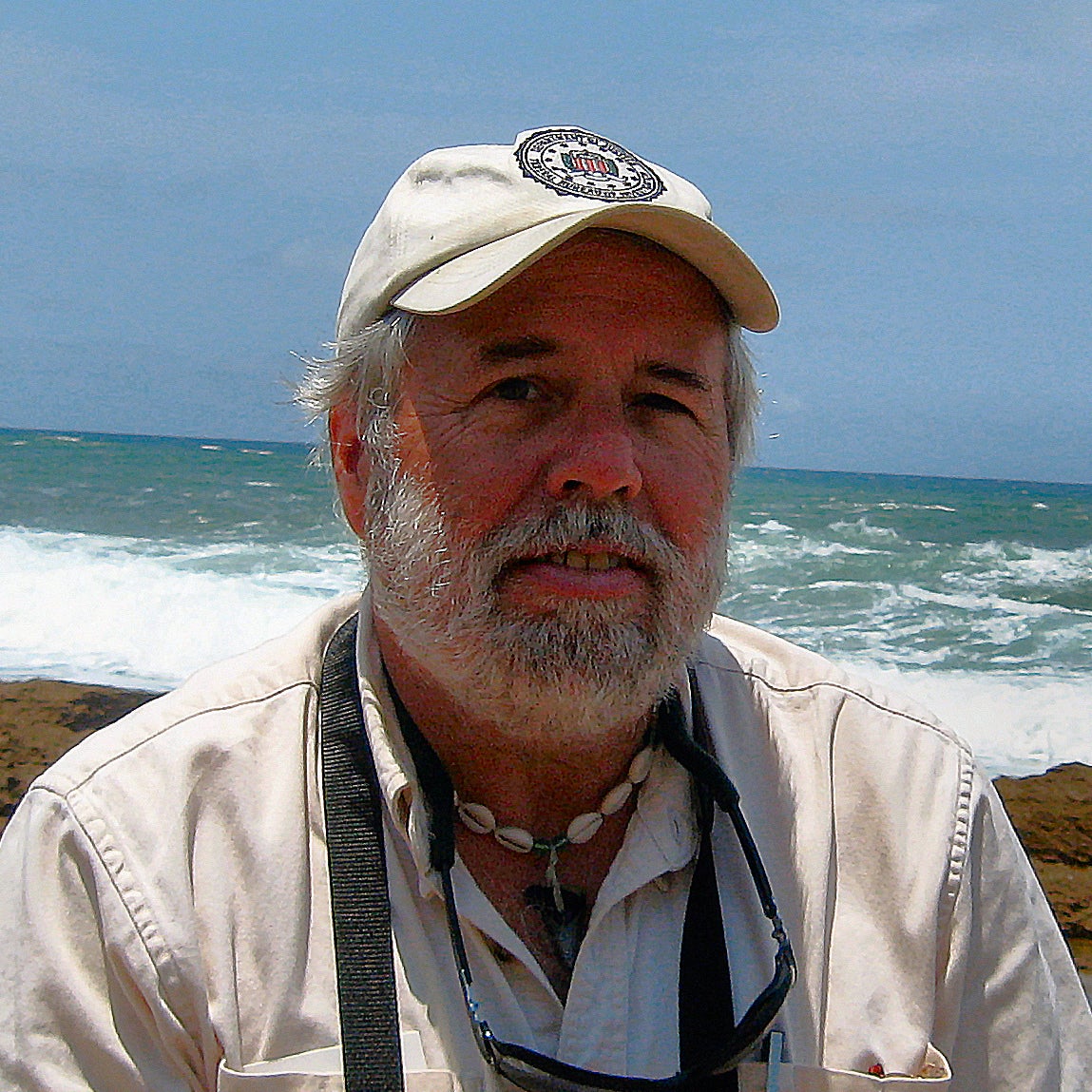- Emeritus Marine Research Scientist
- Biological Oceanography
- Phone: 401.874.6664
- Email: rkenney@uri.edu
- Office Location: 5 Marine Building
Research
Biological Oceanography
During my 35 years at GSO, I have participated in two major research projects that were centered here, CETAP and SCOPEX. Both of them were linked to another project—the North Atlantic Right Whale Consortium—one of the world’s most successful collaborative long-term studies of an endangered whale species.
The Cetacean and Turtle Assessment Program (CETAP) was a landmark study to understand the species diversity, distribution, seasonality, and abundance of whale, dolphin and sea turtle populations off the northeastern United States. CETAP was a federally funded effort designed to provide basic environmental assessment information relative to oil drilling on Georges Bank and in the mid-Atlantic. The resulting data remain a valuable source of information for environmental impact assessments of other activities, e.g., wind farms, as well as studies of individual species. The most recent was just in early 2014—a global assessment of the distribution of Risso’s dolphin. CETAP provided the first reliable assessments of distribution and abundance of the North Atlantic right whale, one of the world’s most endangered mammal species. CETAP surveys discovered the existence of the population’s primary springtime feeding ground in the Great South Channel.
The South Channel Ocean Productivity Experiment (SCOPEX) was a multi-disciplinary study of the marine ecosystem in the Great South Channel, with the objective of understanding what made it an important right whale feeding ground. SCOPEX included studies of whales, zooplankton, and physical oceanography—collaborating with other investigators at GSO and other institutions. Fifty-ton right whales feed on five-milligram copepods (a billion-to-one ratio) in extremely dense patches, and a principal result of SCOPEX was the understanding that the formation of those patches is primarily a physical process enhanced by the behavior of the copepods.
The North Atlantic Right Whale Consortium was created by GSO, the Woods Hole Oceanographic Institution, the New England Aquarium, the Provincetown Center for Coastal Studies, and Marineland of Florida in 1986 as a venue for sharing information and collaborating in research on right whales. The Consortium has grown to include dozens of academic, research, non-profit, and governmental agencies from Florida to Atlantic Canada—all dedicated to the conservation of one endangered whale species. Database management for the Consortium has been based at GSO, building upon the data and associated expertise from CETAP. Consortium collaborations have resulted in significant publications on distribution, abundance, trends, ecology, reproduction, physiology, mortality, acoustics, and more.
Our research experience in marine mammal survey, data analysis, and environmental assessment has naturally expanded into such arenas as assessing and monitoring the potential impacts of wind farms, other industrial developments, and naval training activities on protected marine species.
Education
Ph.D. Biological Oceanography, University of Rhode Island, 1984
B.S. Natural Resources/Aquatic Science, Cornell University, 1978
Selected Publications
Jefferson, T.A., C.R. Weir, R.C. Anderson, L.T. Balance, R.D. Kenney, and J.J. Kiszka. 2014. Global distribution of Risso’s dolphin Grampus griseus: a review and critical evaluation. Mammal Review 44: 56–68.
Schick, R.S., S.D. Kraus, R.M. Rolland, A.R. Knowlton, P.K. Hamilton, H.M. Pettis, R.D. Kenney, and J.S. Clark. Using hierarchical Bayes to understand movement, health, and survival in the endangered North Atlantic right whale. PLoS ONE 8(6): e64166.
Kenney, R.D., and K.J. Vigness-Raposa. 2010. Marine Mammals and Sea Turtles of Narragansett Bay, Block Island Sound, Rhode Island Sound, and Nearby Waters: An Analysis of Existing Data for the Rhode Island Ocean Special Area Management Plan. Final Technical Report to the Rhode Island Office of Energy Resources and Rhode Island Coastal Resources Management Council. University of Rhode Island, Graduate School of Oceanography, Narragansett, RI. 340 pp.
Kenney, R.D. 2009. Right whales Eubalaena glacialis, E. japonica, and E. australis. Pp. 962-972 in: W.F. Perrin, B. Würsig, and H.G.M. Thewissen, eds. Encyclopedia of Marine Mammals, second edition. Academic Press, San Diego, CA.
Pershing, A.J., N.R. Record, B.C. Monger, C.A. Mayo, M.W. Brown, T.V.N. Cole, R.D. Kenney, D.E. Pendleton, and L.A. Woodard. 2009. Model-based predictions of right whale distributions in the Gulf of Maine. Marine Ecology Progress Series 378: 245-257.
Vanderlaan, A.S.M., C.T. Taggart, A.R. Serdynska, R.D. Kenney, and M.W. Brown. 2008. Reducing the risk of lethal encounters: vessels and right whales in the Bay of Fundy and on the Scotian Shelf. Endangered Species Research 4: 283-297.
Kenney, R.D. 2007. Right whales and climate change: Facing the prospect of a greenhouse future. Pp. 436-459 in: S.D. Kraus and R.M. Rolland (eds). The Urban Whale: North Atlantic Right Whales at the Crossroads. Harvard University Press, Cambridge, MA.
Kraus, S.D., M.W. Brown, H. Caswell, C.W. Clark, M. Fujiwara, P.K. Hamilton, R.D. Kenney, A.R. Knowlton, S. Landry, C.A. Mayo, W.A. McLellan, M.J. Moore, D.P. Nowacek, D.A. Pabst, A.J. Read, and R.M. Rolland. 2005. North Atlantic right whales in crisis. Science 309: 561-562.

